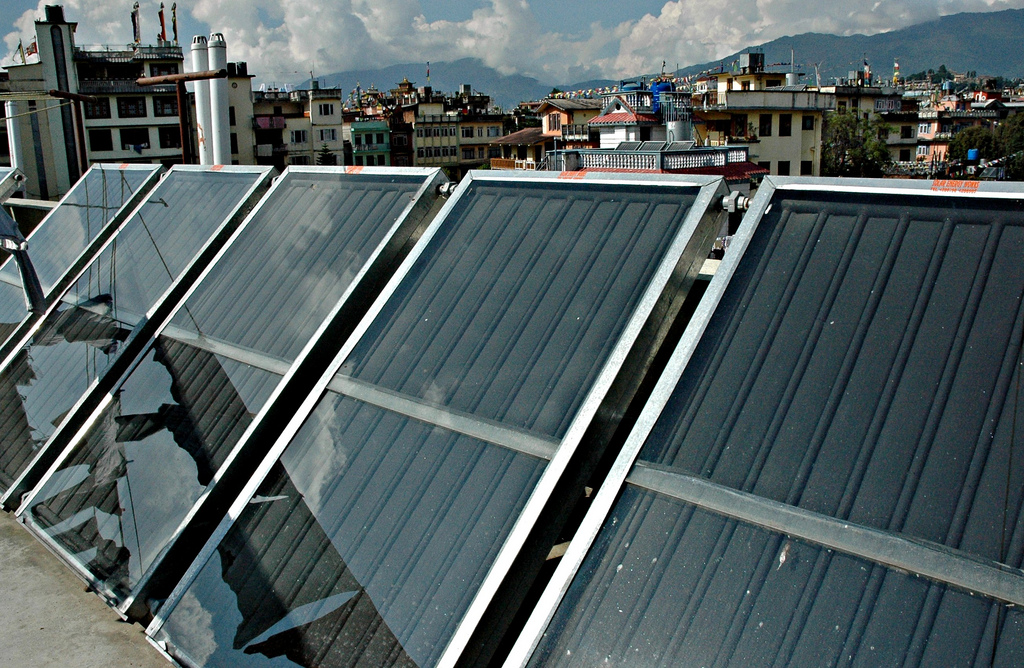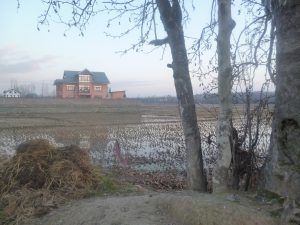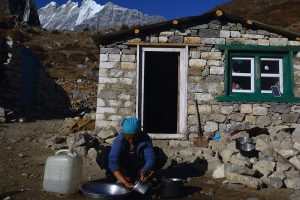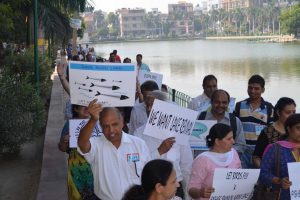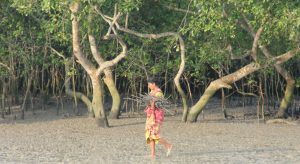Severe shortages of fuel and cooking gas over the past five months have forced Nepalese to install solar panels and take up cycling. Protests by communities in the southern plains against Nepal’s new constitution since September have disrupted the supply of goods into the country, including petrol, which landlocked Nepal is completely dependent on India for. Many in Nepal blame India for imposing the blockade in tacit support for the protestors, but India refutes such claims.
Nepal is still reeling under the impact of the earthquake in April, which may have pushed up to 800,000 below the poverty line. The blockade may have pushed another 700,000 or so under the poverty lines as shortages of food, fuel and medicine push prices up.
Those who can afford it are seizing the opportunity to invest in green energy. “For whatever reasons the blockade was imposed, this is the right time to shift from dirty fossil fuels and invest in cleaner sources of energy. This crisis has made people realize that dependency on fossil fuel that is imported from [our] neighbour is not sustainable,” said Prashanta Khanal, a longtime advocate for creating a cycle friendly city.

Only about 12 megawatts —about 2% of the country’s total energy production — has been produced from solar and less than 20 kilowatts from wind, according to the Alternative Energy Promotion Center (AEPC), a government agency responsible for alternative energy. Most of the remaining energy comes from firewood and hydropower.
But Prime Minister K.P Oli, in his first televised speech in November, said that the government will generate 200 megawatts — about one third of the current national production — from solar energy within a year. Other initiatives using biogas and renewable will also be introduced, Oli said.
But many people are sceptical that this goal can be achieved. The pace of development since this announcement has not been encouraging. The government appears to be waiting to see if the borders will be opened to allow fuel imports from India, said Sanot Adhikari, director of Youth Alliance for Environment, an NGO working on environmental issues.
There have been some small-scale initiatives. The government has decided to install a one-megawatt set of solar panels to power its administrative offices in Singha Durbar in Kathmandu. In addition, the department of mines and geology will extract methane gas in Kathmandu to provide cooking gas to about 20,000 households.
A few methane gas deposits have already been identified in Kathmandu and a tender issued for interested companies to extract and supply the gas, said Sarbjit Prasad Mahato, director general of the department of mines and geology.
The private sector has started some positive initiatives as well. Banks are providing subsidised loans to install solar panels. Last week, the Himalayan Bank, one of the biggest private banks, launched its own initiative to provide low-interest loans for installing solar panels.
These changes are most visible at the household level. Solar panels used to be common in rural areas, but have now spread to urban areas as well. The growing number of photos of solar installations posted on social media channels such as Facebook and Twitter suggests a significant increase. “Newly installed solar system on my roof, no problem even if there is power cut,” wrote Saurav Dhakal posting his solar panel pictures on Facebook.
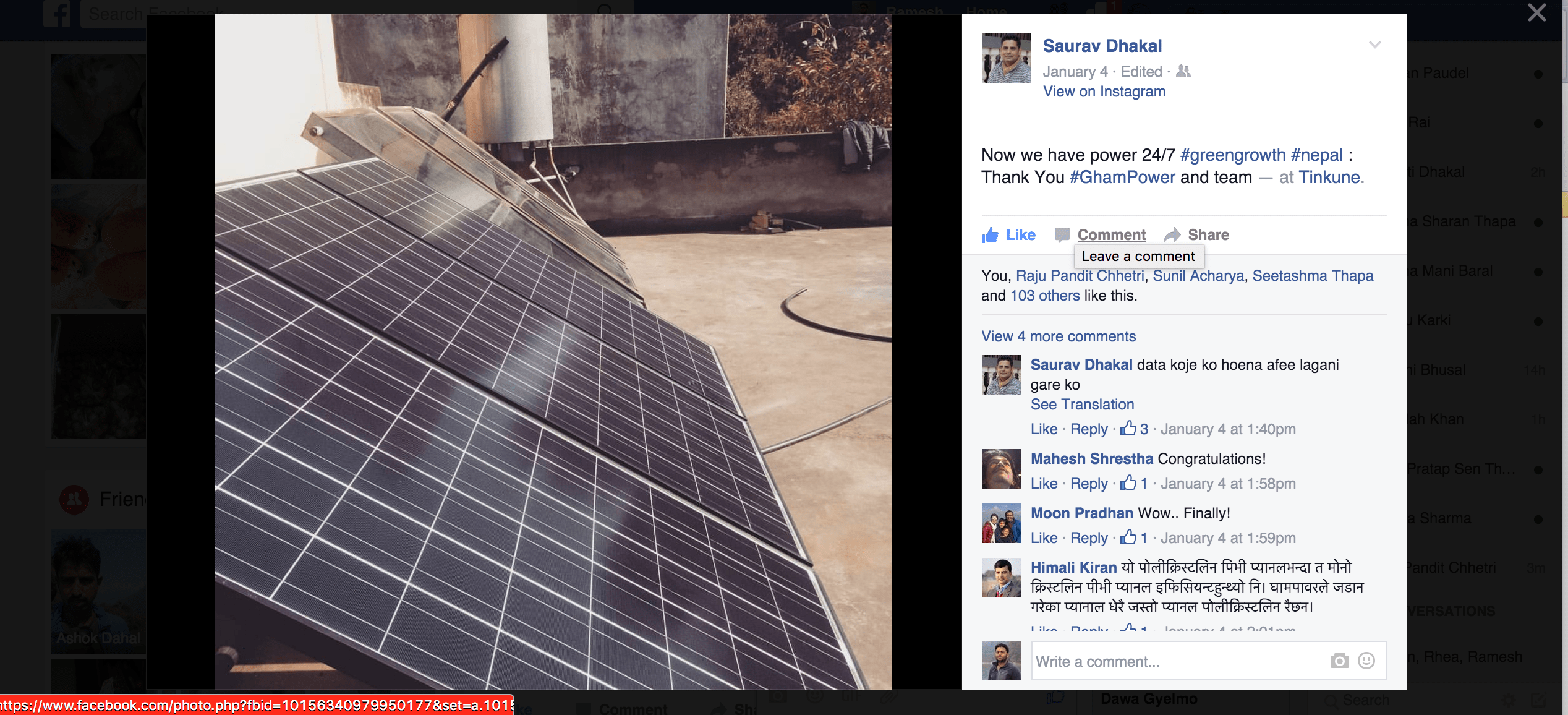
Solar installation companies have also indicated a growing demand. “Getting even a day off at the weekend has not been possible over the past couple of months, demand is pretty high,” said Rajesh Shrestha, who installs solar systems in Kathmandu.
Will these green initiatives make a difference?
Despite all the activity, these small-scale projects are unlikely to solve the country’s current energy crisis, where people are reeling under 14 hours of power cuts every day.
Over 80% of Nepal’s energy demand is met through traditional source of energy like fuelwood and the rest through hydropower and fossil fuels imported from India.
Nepal’s hydropower potential is estimated to be around 83,000 MW but less than one percent of it has been exploited in over a century. “Solar or other alternatives can help reduce increasing demand but it can’t be a remedy for the current crisis. The country should aggressively develop hydropower,” said Anup Upadhyay, secretary at the ministry of irrigation who worked at the energy ministry for years.
People who have invested in alternative energy have suffered less over the past few months. While thousands of vehicles queued for days to buy petrol, electric vehicles ran without a problem.
“This is an opportunity for the government to set policies that encourage people to invest in renewables and promote electric vehicles, otherwise it will just be a temporary arrangement during the crisis,” said Raju Chhetri, Director of Prakriti Resources Centre, an environmental NGO based in Kathmandu.
People who have bought bicycles also fear the fad might end once the situation goes back to normal and the roads become too busy and dangerous to cycle. Sanot Adhikari has started cycling but has had a horrible experience over the last few months. “I have been hit twice in the last three months. This is not a bicycle friendly city and we need to invest more in cycle infrastructures if we want people to continue what they have started to manage during blockade,” he said.
